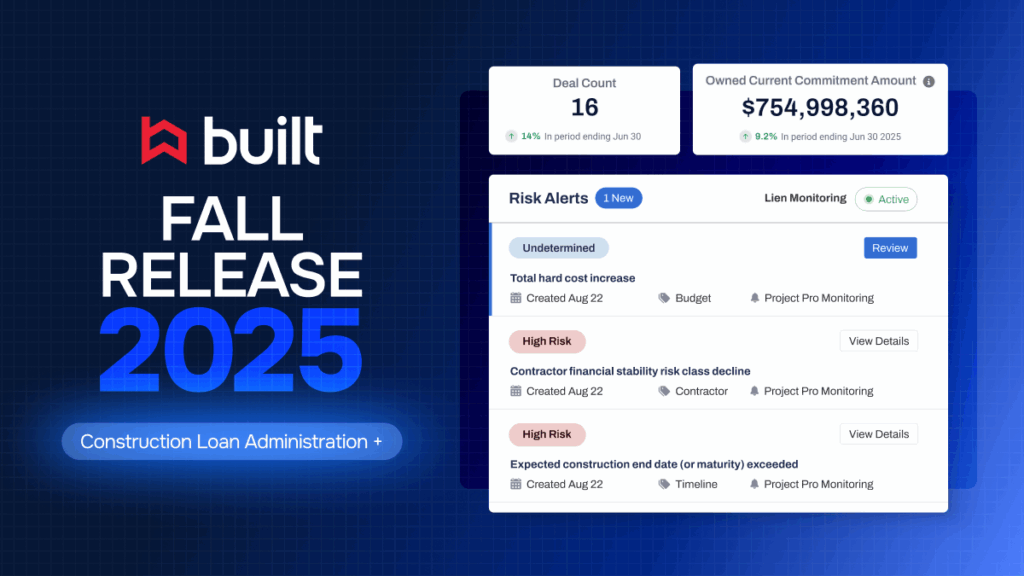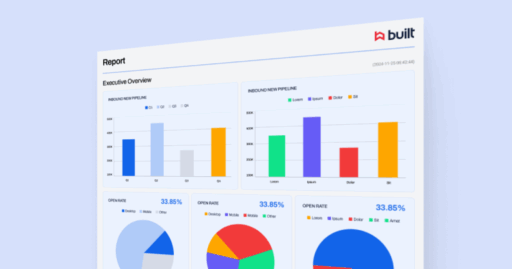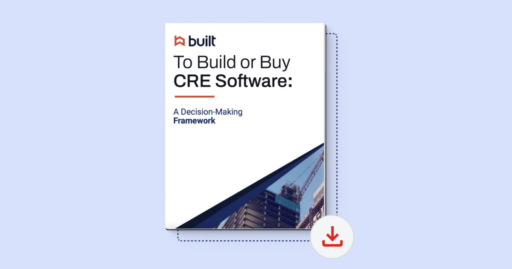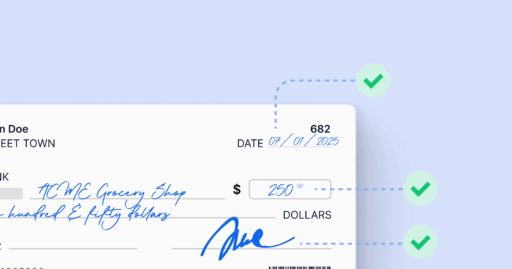
M&As in Construction Lending: Insights, Opportunities, & Challenges

As existing home sales continue to decline and refinances all but disappear, ambitious lenders are seeking new ways to support their customers and increase revenue. Despite a cooling housing market, the U.S. is still amid a massive housing shortage. Demand for construction remains steady, with building permits and housing completions up compared to this time last year. In addition, the aging stock of existing housing indicates a strong remodeling market.
Due to the complexity and risk associated with construction lending, it can be difficult for lenders to break into the space or grow their existing portfolios organically–especially when managing loans manually. By acquiring or merging with smaller lenders that specialize in construction lending, larger lenders can scale their construction portfolio with a speed and efficiency not possible organically. Mergers and acquisitions (M&As) allow lenders to quickly acquire resources, knowledge, and proven technology–resulting in a more efficient and comprehensive construction lending operation.
However, M&As are complicated, and when coupled with the already complex world of construction lending, lenders can expect a few bumps along the way. Fortunately, leveraging technology that is configurable and flexible can help ease these challenges and set lenders up for success.
A Snapshot of Recent M&A Activity
With $2.9 trillion in total deal volume, 2021 was a record year for M&A activity in the United States–rebounding from the downward trend of 2020 and soaring past pre-pandemic levels. Of that volume, bank M&As accounted for approximately $75 billion. The total number of U.S. banks has been steadily declining year over year. The Federal Deposit Insurance Corporation (FDIC) indicates that the number of bank failures is low–signaling that this decline is primarily due to M&As.
A major driver for bank M&A is restructuring for digital transformation. In fact, according to the Deloitte 2021 M&A Survey, “72% of banks undertook restructuring initiatives since the pandemic began, and almost all of banking & capital markets (B&CM) intends to at least consider it in the near term–which could be a trigger for subsequent M&A. Respondents’ primary reason for B&CM restructuring has not been cost-cutting; rather, it has been for digital transformation purposes.” In the first half of 2022, despite strong headwinds like rising interest rates, economic uncertainty, and recent crackdowns on oversight of bank mergers, bank M&A activity remains steady as banks respond to the overwhelming demand for digital solutions. In 2022, digital transformation is no longer about staying ahead of the curve, it is necessary to survive in today’s market.
Identifying & Overcoming M&A Challenges in Construction Lending
M&As can make a lot of sense for lenders looking to quickly grow their existing construction portfolio, digitally restructure their construction processes, expand product offers, or break into new markets. However, M&As in construction lending present unique challenges. It’s important for lenders to understand these challenges and how to overcome them before entering a deal.
Managing Contractor Relationships
One of the biggest challenges for construction lenders undergoing M&As is the breakdown of the existing relationship model. For example, if a Nashville-based lender wants to gain access to the Chattanooga market, it can acquire a lender with an established footprint in that area. While the Nashville-based lender may have great relationships established with contractors in its local market, it has no familiarity and no relationships with the contractors in Chattanooga. It can no longer rely on a phone call or an email to contact a proven contractor. The risk associated with working with an unknown contractor can be a major pain point for lenders undergoing M&As.
Relationship breakdown is a common occurrence for lenders in unfamiliar markets. Unfortunately, many lenders in this situation often find out contractor trustworthiness the hard way because they have no process to properly vet or monitor them. Contractor credit, financial, or legal issues can cause serious delays and cost lenders thousands of dollars. And, even after a problematic contractor is identified, firing them can be costly as they are unlikely to refund any money they’ve already been paid. In addition, any unsatisfactory work that has already been completed may need to be redone.
Luckily, having a consistent and reliable digital solution in place to accept and manage contractor relationships throughout the project can significantly mitigate this risk. Built’s Project Pro allows lenders to set and customize specific acceptance requirements, including state license status, insurance coverage, past project performance, and business credit profile. These acceptance requirements are seamlessly integrated into the initial review and tracked throughout the life of the project. And. if a contractor falls out of compliance or defaults, the lender is altered immediately–ensuring nothing slips through the cracks.
Technology Integration
Another common challenge lenders face during M&As is technology integration. Converting a tech stack can be particularly problematic when each lender has a different system to manage their construction loans. Because construction lending typically accounts for a relatively small percentage of a bank’s portfolio, most (if not all) technology resources are allocated to core accounting systems, loan operating systems, and client relationship management systems. This means that many lenders are forced to settle for manual solutions or fragmented technology to manage their construction portfolios, which can be especially problematic when undergoing M&A. Sorting through Excel spreadsheets and emails to find information and documentation make data migration incredibly tedious, time-consuming, and risky. Before entering an M&A deal, lenders should work toward eliminating manual methods of construction loan management. Adopting a centralized digital solution not only allows for efficient data migration but also ensures that this data is visible to everyone involved–saving time and allowing for informed decision-making.
It’s also important to note that M&As can be stressful for employees–especially when they are being asked to adopt and learn new technology. It is crucial that executive leadership teams set clearly defined outcomes for future workflow and technology adoption, provide guidance and training to inspire confidence in the future state of technology, set realistic expectations for efficiencies, and execute all critical decisions.
Setting Up For Success
Whether a lender has an existing construction portfolio and is looking to expand its current offerings or it is looking to break new ground, M&As are an integral part of corporate growth strategies. Before entering a deal, lenders should carefully consider the challenges involved and take the appropriate steps to ensure they have technology in place that is configurable and flexible.
Managing contractor relationships in new markets and data migration are two major challenges for lenders undergoing M&A. Built offers innovative solutions for risk management, including extensive contractor management and monitoring tools that can mitigate the risk of onboarding unfamiliar contractors in a new market. Additionally, Built’s platform allows lenders to electronically store and manage data in one location–helping to ease the pain of data migration.
Ready to learn more?
Talk to an expert about how Built can bring value to your company.
Related Posts

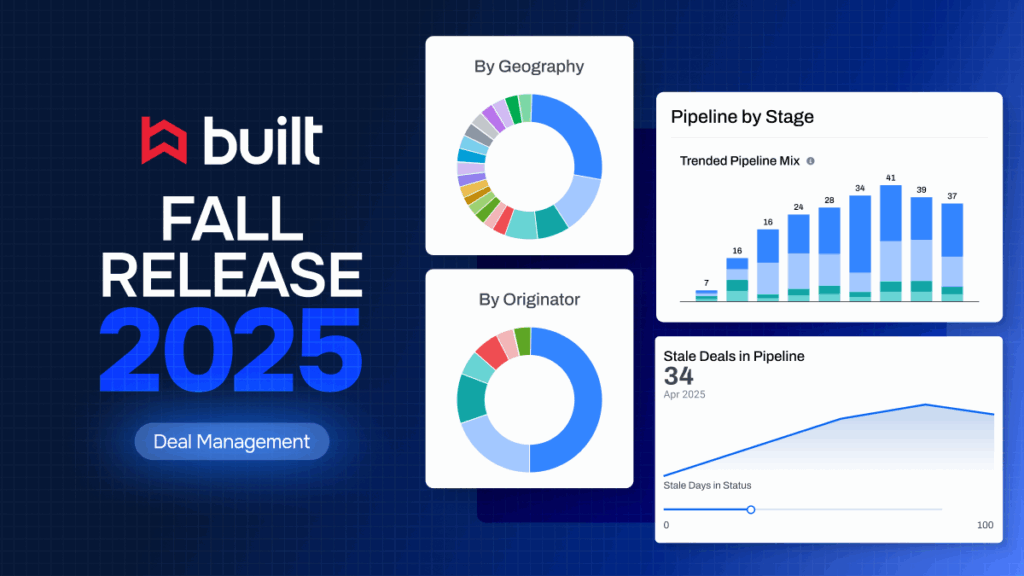
Fall Release Recap: What’s New in Deal Management
